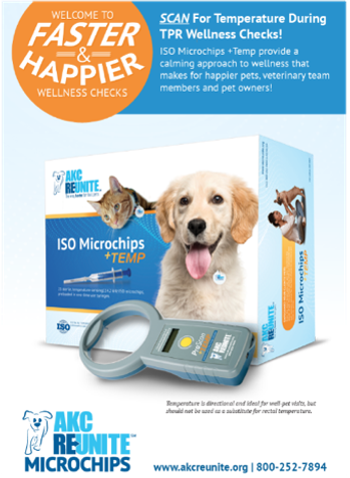
Perspectives: Analysis of 275,000 uroliths
Knowledge of urolith composition is important because contemporary methods of detection, treatment and prevention of the underlying causes of urolithiasis are primarily related to knowledge of urolith composition. The following discussion is based on quantitative analysis of 275,000 canine uroliths submitted to the Minnesota Urolith Center from 1981 to the spring of 2006. (For additional details related to feline uroliths and feline urethral plugs, refer to the Diagnote entitled "Changing trends in composition of feline uroliths and feline urethral plugs," published in the April 2006 issue of DVM Newsmagazine (Vol. 37, No.4).
Knowledge of urolith composition is important because contemporary methods of detection, treatment and prevention of the underlying causes of urolithiasis are primarily related to knowledge of urolith composition. The following discussion is based on quantitative analysis of 275,000 canine uroliths submitted to the Minnesota Urolith Center from 1981 to the spring of 2006. (For additional details related to feline uroliths and feline urethral plugs, refer to the Diagnote entitled "Changing trends in composition of feline uroliths and feline urethral plugs," published in the April 2006 issue of DVM Newsmagazine (Vol. 37, No.4).
Table 1 Changing trends in mineral composition of canine uroliths submitted to the Minnesota Urolith Center from 1981 to 2005
In 1981, calcium oxalate was detected in only 5 percent of canine uroliths submitted to the Minnesota Urolith Center, whereas struvite (magnesium ammonium phosphate) was detected in 78 percent (Table 1). However, evaluation of the prevalence of different types of minerals in canine uroliths during successive years revealed a gradual and consistent increase in occurrence of calcium oxalate uroliths and a gradual and consistent decline in the occurrence of struvite uroliths (Tables 1 and 2). In fact, by 2003 the prevalence of calcium oxalate (41 percent) was approximately equal to struvite (40 percent). In 2004, calcium oxalate (41 percent) surpassed struvite (39 percent). In 2005, calcium oxalate was detected in 41 percent of the urolith submissions while struvite was detected in (38 percent). Stated in another way, from 1981 to the spring of 2006, struvite uroliths declined by approximately 43 percent compared to a 780-percent rise in calcium oxalate (Table 2). What is the explanation of this dramatic change?
Table 2 canine urolith distribution 1981-2005
One hypothesis to explain the reciprocal relationship between the prevalence of canine calcium oxalate and magnesium ammonium phosphate uroliths during this period is that development and widespread acceptance of medical protocols to dissolve canine struvite uroliths with calculolytic diets by the veterinary community resulted in decreased submission of struvite uroliths for analysis.
Table 3 Mineral composition of 275,000 canine uroliths
Struvite urolith dissolution technology was introduced to the veterinary profession in approximately 1983. Since then, struvite dissolution has become a standard of practice. However, if the increase in prevalence of calcium oxalate resulted solely as a result of reduction in struvite stone submissions related to their dissolution, one would expect a proportionate increase in prevalence of other urolith types as well. Did this occur? During the same period, the prevalence of purines, cystine, calcium phosphate and silica uroliths did not increase substantially. However, the prevalence of compound stones containing calcium oxalate increased. (If the core or center of a urolith is at least 70 percent one mineral type [e.g. calcium oxalate], and is surrounded by one or more layers primarily [>70 percent] of a different mineral, such as struvite, then it is called a compound urolith, as seen in Photos 1 and 2). Thus it is apparent that the increased prevalence of canine calcium oxalate uroliths also must have been associated with other factors. As described elsewhere, these factors appear to include several dietary components, gender and breed of dog.
Photo 1: Ventrodorsal survey radiograph of the abdomen of a 10-year-old spayed female Yorkshire terrier. Note the different radiographic density of the compound urocystolith.
A concise and practical (something practical can be put into practice) evidence-based discussion about calcium oxalate urolithiasis was sponsored by Hill's Pet Nutrition in July 2003 at the University of California entitled "Managing urolithiasis in cats. Recent updates and practice guidelines." In addition, studies are in progress at the Minnesota Urolith Center to identify and control the causes of calcium oxalate and other types of uroliths. To learn more about our studies and learn how you can participate in them, visit our Web site at
Photo 2: Photograph the compound urocystolith removed from the dog described in Photo 1. The nucleus was composed of calcium oxalate. The shell was composed primarily of magnesium ammonium phosphate.
Carl A. Osborne DVM, PhD, Dipl. ACVIM Dr. Osborne, a diplomate of the American College of Veterinary Internal Medicine, is professor of medicine in the Department of Small Animal Clinical Sciences, College of Veterinary Medicine, University of Minnesota.
Jody P. Lulich DVM, PhD, Dipl. ACVIM Dr. Lulich, a diplomate of the American College of Veterinary Medicine, is a professor in the Department of Small Animal Clinical Sciences, College of Veterinary Medicine, University of Minnesota.
Newsletter
From exam room tips to practice management insights, get trusted veterinary news delivered straight to your inbox—subscribe to dvm360.





